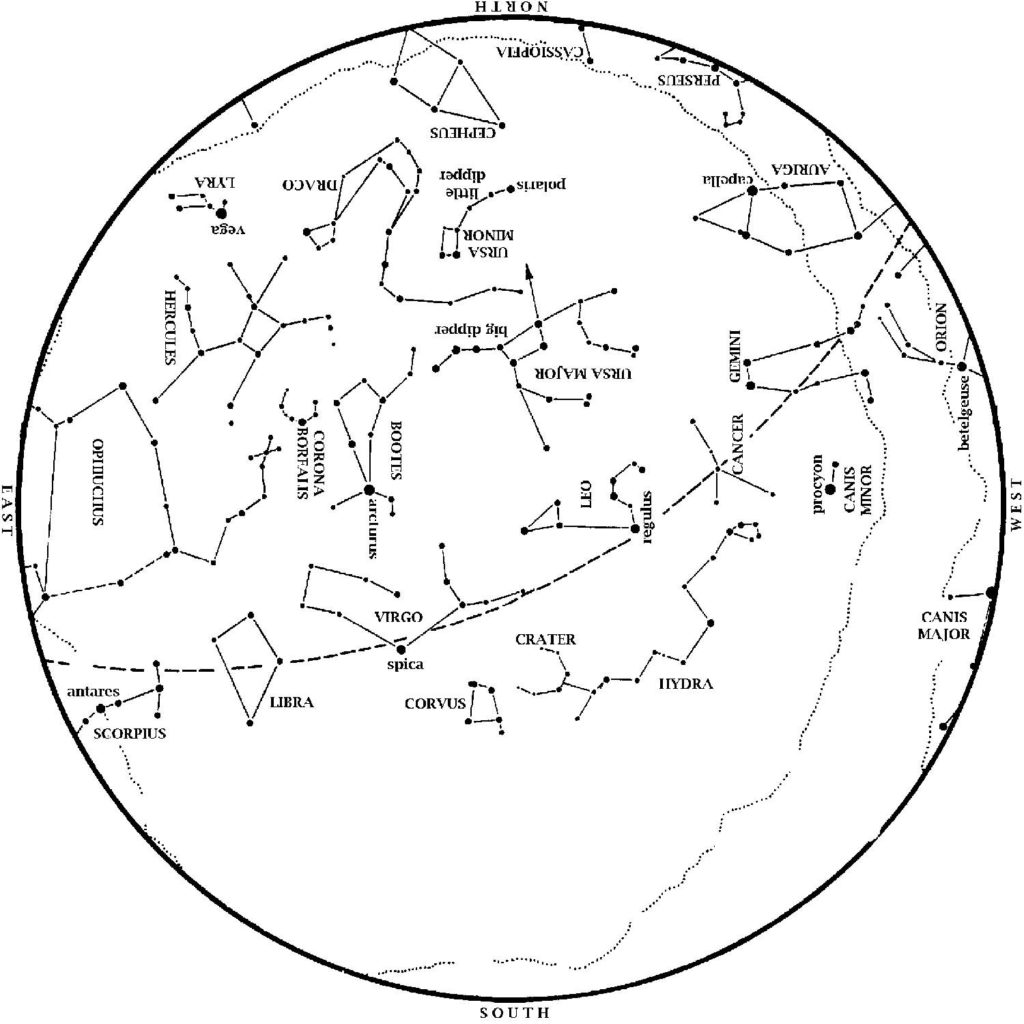In times gone by, our ancestors gazed up at the night sky and told stories of the wondrous figures they saw gliding above the horizon. That was before television. These days most of us have forgotten the stories, but the stars are still up there. All you have to do is look. Your imagination will take care of the rest.
Today on Beyond Bones, HMNS’ resident astronomer James Wooten shows us what too look for in the night sky this month.

The Stars Tonight
A swath of brilliant winter stars sets in the west at dusk. Orion, the Hunter, is still visible in the west as May begins. His two dogs, represented by Sirius and Procyon, are to his left. Gemini, the Twins, are above Orion. The Big Dipper is above the North Star, with its handle pointing to the right. From that handle, you can ‘arc to Arcturus’ and then ‘speed on to Spica’; those stars are high in the east and in the southeast, respectively, at dusk. Leo, the Lion, passes almost overhead at dusk.
As Orion and his dogs set, look for Antares, brightest star of Scorpius, the Scorpion, to rise in the southeast. At the same time, Vega, brightest star of the Summer Triangle, appears low in the northeast. These stars remind us that summer is on the way.
On May evenings, the plane of the Milky Way roughly coincides with the horizon. (At Houston’s latitude, the two planes are off by less than three degrees). We are therefore looking straight out of the Milky Way plane when we look up early on a May evening. Thus May evening skies have fewer bright stars, as we see most of the brightest stars in the Milky Way plane which is ringing the horizon.
Keeping Up with the Neighbors

The Solar System, (not to scale – actually very very far from the real scale – creating a scale image of the solar system with detailed representations of all its major bodies would not likely be feasible – see w:solar system model ) showing the Sun, Inner Planets, Asteroid Belt, Outer Planets, and a comet. Authors: Harman Smith and Laura Generosa
Mars is low in the west northwest at dusk. Although now considerably dimmer than last July, Mars still outshines most of the stars in its vicinity.
Jupiter remains in the morning sky this month. Face southwest at dawn to find it. It is now a late evening object too, rising in the southeast just after 11:00 on May 1 and by dusk on May 31. For much of June, Jupiter is up all night long
Venus is low in the morning sky. Face east at dawn and look for the brightest thing there, outshining the stars and all other planets.
Saturn remains in the morning sky. Look low in the south southwest at dawn.
Moon Phases in May 2019:

New May 4, 5:48 p.m.
Full May 18, 4:11 p.m.
1st Quarter May 11, 8:12 p.m.
Last Quarter May 26, 11:33 a.m.
George Observatory is open to the public! Come join us any clear Saturday night!
Clear Skies!





